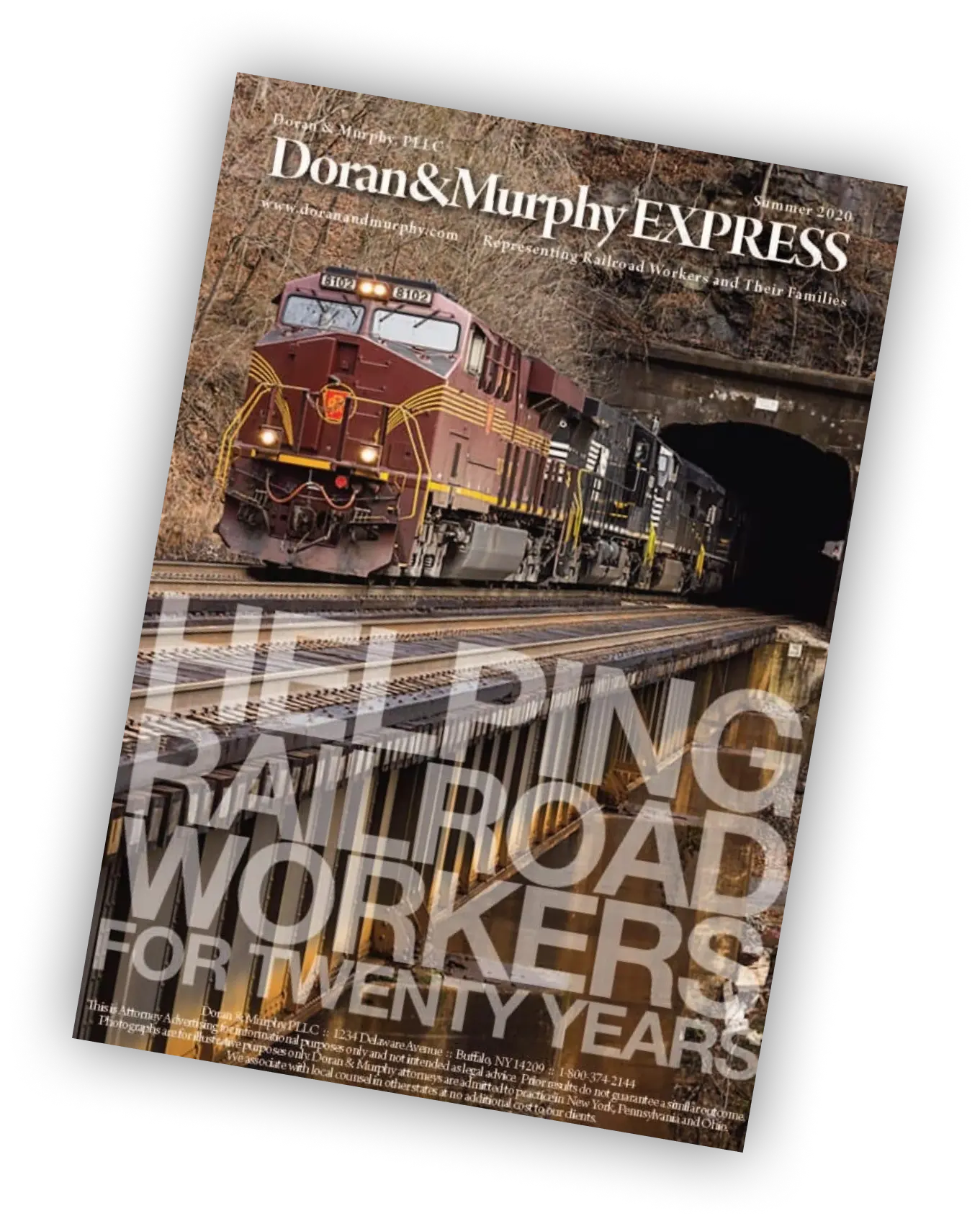Railroad workers are at an increased risk of developing cancer due to occupational exposures. The most common cancers associated with occupational exposure on the railroad are lung cancer and mesothelioma. However, many other cancers are caused by occupational exposures, including railroad exposures, such as laryngeal, esophageal, colon and other cancers.
Railroad workers who are exposed to diesel fumes, have a 40% greater risk of lung cancer. In June this year, the International Agency for Research on Cancer (IARC) reclassified diesel emissions from group 2A (probably carcinogenic to humans) to group 1 (carcinogenic to humans). This puts diesel emissions in the same category as other group 1 carcinogens such as arsenic, asbestos, benzene, ethanol, and formaldehyde. Diesel emissions are associated with an increased risk of lung cancer and possibly an increased risk of bladder cancer and laryngeal cancer, although the evidence for this is limited. Railroad workers may also be at an increased risk for lung cancer because of their occupational exposure to certain chemicals or fine silica particles as well. Silica appears in sand, rock, and mineral ores, and is used in laying railroad track.
Asbestos is also a known cause of disease for railroad workers. Individuals who are exposed to asbestos on the job are seven times more likely to die from lung cancer. Asbestos affects the lining of the lungs or abdomen, causing malignant mesothelioma. Mesothelioma is considered incurable and fatal, and may not be detected until as long as 45 years after exposure. Asbestos can still be found on many locomotives and facilities used by railroads. Because of the way in which asbestos in inhaled and processed in the body, it can also lead to cancers of the larynx, esophagus, pancreas, kidney, and colon.
While tobacco smoking is the most well known risk factor for lung cancer, occupational exposures to harmful substances may put you at an even greater risk. Even individuals who do not smoke can still develop lung cancer due to exposures at the work place. Additionally, asbestos and cigarette smoke together create a risk of cancer many times greater than simply adding together the risks of asbestos with cigarette smoking. This is called synergy.
Railroad workers who develop cancer through occupational exposure may bear a considerable financial burden. Employees need to be fully informed of the substances with which they come in contact and the dangers they present. While many cancers have an unknown source, cancers due to occupational exposures have known sources and compensation may be available. If you would like to consult with a railroad cancer lawyer, please contact us today.
Sources:
Esther Csapo Rastegari R.N., B.S.N., Ed.M., Occupational Exposures and Cancer, Gale Encyclopedia of Cancer, 2002
www.epa.gov
www.cancer.gov





